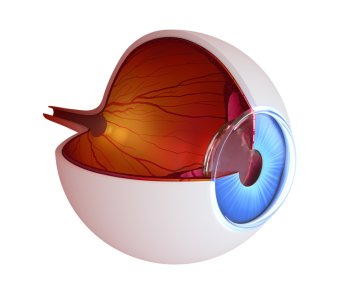 Medicine & Health
Medicine & Health
Modern methods of elimination of vision defects
In the development of various types of vision defects is very important genetic issue, because the tendency to them is usually inherited from parents. Equally, however, it is our actions that cause vision defects to develop.
Modern medicine fortunately gives us a whole range of excellent possibilities in terms of removing short-sightedness, hyperopia, as well as diseases that we call astigmatism. This type of problems are always related to the deformations of the eyeball, which in its correct form is almost perfectly spherical. Its extension or shortening results in problems with viewing objects close or far away, they become blurred, and sometimes this problem always occurs, regardless of the distance. Eye-perfectionist in our body Our eye is made up of many structures.
The first one to which light reaches is the cornea, which is a five-layer transparent substance that refracts light but allows you to easily see everything underneath it. And under it you can see an iris and a pupil. A flexible lens ensures that the light is focused on the retina in such a way that objects are sharp at a distance of our choice. This is the so-called accommodation. The iris adjacent to the lens is very sensitive to light and reacts to the amount of light directly delivered to it through shrinkage and expansion. This is observed by changing the size of the pupil, which affects the amount of light reaching the retina at the bottom of the eye.
 It is from the retina that the optic nerve is attached, which transmits electrical impulses responsible for informing the brain what we actually see. The interpretation is, of course, a matter for the brain. Typical vision defects When light is concentrated in this mechanism in the wrong place, we see blurred and talk about vision defects. A distant viewer does not see objects close to him and needs focusing lenses (+). The short-sighted viewer, on the other hand, does not see distant objects because the image is created too quickly and reaches the retina as scattered. For him there are glasses (-). If other corneal deformations occur, light can refract differently in different planes and we are talking about astigmatism. In other words, the eyeball can not only be a little flattened on one of the axes, like our planet, but also be stretched like a rugby ball and have different curves.
It is from the retina that the optic nerve is attached, which transmits electrical impulses responsible for informing the brain what we actually see. The interpretation is, of course, a matter for the brain. Typical vision defects When light is concentrated in this mechanism in the wrong place, we see blurred and talk about vision defects. A distant viewer does not see objects close to him and needs focusing lenses (+). The short-sighted viewer, on the other hand, does not see distant objects because the image is created too quickly and reaches the retina as scattered. For him there are glasses (-). If other corneal deformations occur, light can refract differently in different planes and we are talking about astigmatism. In other words, the eyeball can not only be a little flattened on one of the axes, like our planet, but also be stretched like a rugby ball and have different curves.
So-called cylindrical lenses should be used to correct astigmatism. The description of the work of such a lens is more complicated and it is better to leave it to the specialists. If astigmatism occurs in combination with one or both of the other defects, a special fusion of a normal and cylindrical lens is usually performed, which allows a full correction with one glass. This is convenient and also basically natural, as it is simply the opposite of what has appeared on the cornea.






